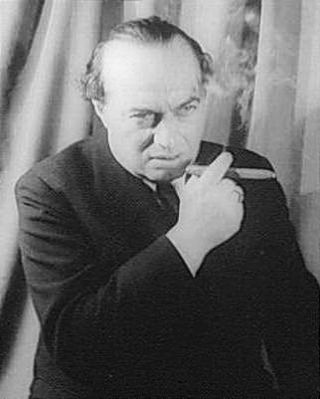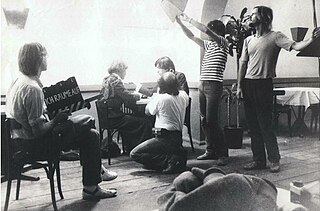Related Research Articles

Franz Viktor Werfel was an Austrian-Bohemian novelist, playwright, and poet whose career spanned World War I, the Interwar period, and World War II. He is primarily known as the author of The Forty Days of Musa Dagh, a novel based on events that took place during the Armenian genocide of 1915, and The Song of Bernadette (1941), a novel about the life and visions of the French Catholic saint Bernadette Soubirous, which was made into a Hollywood film of the same name.

The Forty Days of Musa Dagh is a 1933 novel by Austrian-Bohemian writer Franz Werfel based on events that took place in 1915, during the second year of World War I and at the beginning of the Armenian genocide.

Musa Dagh is a mountain in the Hatay province of Turkey. In 1915, it was the location of a successful Armenian resistance to the Armenian genocide, an event that inspired Franz Werfel to write the novel The Forty Days of Musa Dagh.
Dörtyol, historically Chok Merzimen, is a city in Hatay Province, Turkey. It is a port city and oil terminus located 26 km north of the city of Iskenderun, near the easternmost point of the Mediterranean at the head of the Gulf of İskenderun.

Johannes Lepsius was a German Protestant missionary, Orientalist, and humanist with a special interest in trying to prevent the Armenian genocide in the Ottoman Empire. He initially studied mathematics and philosophy in Munich and a PhD in 1880 with an already award-winning work. Lepsius was one of the founders and the first chairman of the German–Armenian Society.

The Franz Werfel Human Rights Award is a human rights award of the German Federation of Expellees' Centre Against Expulsions project. It is awarded to individuals or groups in Europe who, through political, artistic, philosophical or practical work, have opposed breaches of human rights by genocide, ethnic cleansing, and the deliberate destruction of national, ethnic, racial or religious groups.
The Armenian militia of Hunchaks of the city Zeitun (Süleymanlı) had resisted on two armed conflicts, first from August 30 to December 1, 1914, and second on March 25, 1915, to the Ottoman Empire.
The Zeitun rebellion or Second Zeitun Resistance took place in the winter of 1895–1896, during the Hamidian massacres, when the Armenians of Zeitun, fearing the prospect of massacre, took up arms to defend themselves from Ottoman troops.
Yair Auron is an Israeli historian, scholar and expert specializing in Holocaust and genocide studies, racism and contemporary Jewry. Since 2005, he has served as the head of the Department of Sociology, Political Science and Communication of The Open University of Israel and an associate professor.
Artem Ohandjanian is an Austrian-Armenian historian and documentalist, Honorary Doctor of Sciences Academy of Armenia. He is the deputy head of the "Franz Werfel Committee" (Austria).

The novel The Story of the Last Thought of the German-Jewish writer Edgar Hilsenrath is about the Armenian genocide in 1915. The epic which has the form of a fairy tale (Märchen) and for which Hilsenrath received many prizes is regarded as the most important book about this historical episode. In 2006 the president of Armenia presented the author with the State Award for Literature of the Republic of Armenia for his work.

The Gabriel Sundukyan State Academic Theatre, founded on February 25, 1922 in Yerevan, is the oldest modern theatre in Armenia.
The Forty Days of Musa Dagh is a 1933 novel by the Austrian-Jewish author Franz Werfel. Based on the events at Musa Dagh in 1915 during the Armenian genocide in the Ottoman Empire, the book played a role in organizing the Jewish resistance under Nazi rule. It was passed from hand to hand in Jewish ghettos in Nazi-occupied Europe, and it became an example and a symbol for the Jewish underground throughout Europe. The Holocaust scholars Samuel Totten, Paul Bartrop and Steven L. Jacobs underline the importance of the book for many of the ghettos' Jews: "The book was read by many Jews during World War II and was viewed as an allegory of their own situation in the Nazi-established ghettos, and what they might do about it."
Anna Elbakyan is an Armenian actress. She became an Armenian star after headlining the drama Where Have You Been, Man of God? (1992).
Armenian genocide in culture includes the ways in which people have represented the Armenian genocide of 1915 in art, literature, music, and films. Furthermore, there are dozens of Armenian genocide memorials around the world. According to historian Margaret Lavinia Anderson, the Armenian genocide had reached an "iconic status" as "the apex of horrors conceivable" prior to World War II.

Armen Elbakyan is an Armenian actor, director and producer.
Armenian–Jewish relations are complex, often due to political and historical reasons.

Putting Things Straight is a 1979 film directed and written by Georg Brintrup. The director's first TV-release, it was shot in 16 mm film. The filmscript is based on a polemic printed in 1925 by the Jewish German poet Else Lasker-Schüler, the principal woman representative of German Expressionism.
The Forty Days of Musa Dagh is a 1982 American film produced by John Kurkjian, written by Alex Hakobian, and directed by Sarky Mouradian. It is an adaptation of the novel The Forty Days of Musa Dagh, about the resistance to the Armenian genocide at Musa Dagh, at the time in Aleppo Vilayet, Ottoman Empire and now in Hatay Province, Turkey.

The relationship between the Armenian genocide and the Holocaust has been discussed by scholars. While a direct causal relationship between the Armenian genocide is not proven, it has been suggested that Holocaust perpetrators were inspired by the Ottoman example and the legacy of impunity. Both the Holocaust and the Armenian genocide are considered paradigmatic cases of genocide in the twentieth century.
References
- 1 2 3 4 Kohns, Oliver. "The Aesthetics of Human Rights in Franz Werfel's The Forty Days of Musa Dagh." In: Kaul, Susanne and David Kim (editors). Imagining Human Rights. Walter de Gruyter GmbH & Co KG, 25 September 2015. ISBN 3110387298, 9783110387292. CITED: Google Books PT176.
- ↑ Steiman, Lionel. Franz Werfel: The Faith of an Exile: From Prague to Beverly Hills. Wilfrid Laurier University Press, 30 October 2010. ISBN 1554587964, 9781554587964. Google Books PT112.
- ↑ Steiman, Lionel. Franz Werfel: The Faith of an Exile: From Prague to Beverly Hills. Wilfrid Laurier University Press, 30 October 2010. ISBN 1554587964, 9781554587964. Google Books PT158.
- ↑ Ascherson, Neal (2018-03-08). "Howitzers on the Hill". London Review of Books . 40 (5): 27–30.
- ↑ Keizer, Donna H. Jewish-German Identity in the Orientalist Literature of Else Lasker-Schüler, Friedrich Wolf, and Franz Werfel. Camden House, 1996. ISBN 157113025X, 9781571130259.
- ↑ Auron, Yair. "The Forty Days of Musa Dagh: Its Impact on Jewish Youth in Palestine and Europe" (Chapter 5). In: Hovannisian, Richard G. (editor). Remembrance and Denial: The Case of the Armenian Genocide. Wayne State University Press, 1998. ISBN 081432777X, 9780814327777. Start: p 147. CITED: p. 160.
- ↑ Stern, J. P. The Dear Purchase: A Theme in German Modernism. Cambridge University Press, 9 March 2006. ISBN 0521024404, 9780521024402. p. 80.